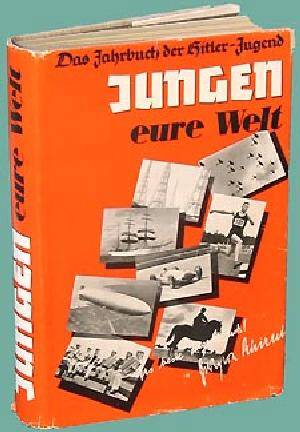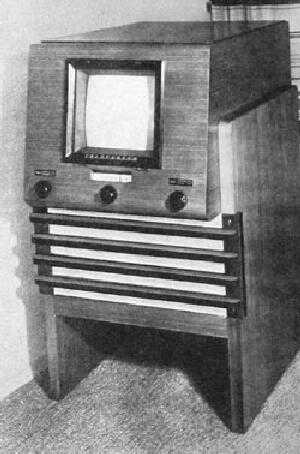
Jungen: Eure Welt: Annual Volumes (Volume II: 1939)

Figure 1.--NAZI authorities published an yearbook for boys. It was entitled "Jungen: Eure Welt", meaning "Boys: Your World". Here is Volume II (1939), although it was published in 1938 with information about 1938 activities and events. For a country still at peace, there is a very strong military focus.
|
|
We have found a 1939 volume of Jungen: Eure Welt. Hitler launched the War in 1939, but the book was published in 1938. The 1939 book has a range of articles that would appeal to young people, probably the boys more than girls. The articles in the 1939 volume included "The HJ Leadership", "12 Months of Hitler Youth Work", "The Work of the Führer Corps", "Water, Air and Motors", "Lucky Austria", "Rudolf Hess", "Fascist Italy", "Himalaya", "Langenmarck", "Looking for Gorillas in the Jungle", "Our Kriegsmarine", "Armored Cars and Mechanized Vehicles at the Front", "German Flyers over Enemy Land", "Sports Heroes from Bernd Rosemeyer to Berger Ruuds", "Sailplane Flying", "The Small Sailboat", "Auto Racing", "The Sun - Motor of the Universe", "Natural History", "The Battle of Torgau", "Plastics", "Television", and an article about of a small city with a military base nearby. There were projects that young people could make like the German red Nazi swastika flag.
We have found a 1939 volume. Hitler launched the War in 1939, but the book was published in 1938 for release un 1939. "Lucky Austria" may seem strange to us today, but the a href="/essay/war/ww2/camp/eur/ea/eag-anc.html">Anschluss was in fact very popular in Austria. This can be seen in the crowds that greeted Hitler when he entered Austria and spoke to the Austrian people. World War II histories decribe how unpopular the Versailles Peace Treaty was in Germany. Actually the St Germain Treaty (1919) which Austria signed was even more unpopular and affected Austria much more than the Versailles Treaty affected Germany. Interstingly there is no article about the Sudetenland and the Munich Treaty, perhaps because it occurred later in the year.
Specifications
The book had over 500 pages. The size is 6-3/4 x 9-3/4 inch, very heavily illustrated. It was Volume II of Jungen Eure Welt: Das Jahrbuch der Hitler Jugend. It was published by the Central Publishing House of the NAZI Party, Franz Eher Nachfolger GmbH in München (Munich), Germany in 1938.
The 1939 year book has a range of articles that would appeal to young people, probably the boys more than girls. The articles in the 1939 volume included "The Hitler Youth (HJ) Leadership" and other articles about the Hitler Youth such as "12 Months of Hitler Youth Work" and an article we can't quite make out. Other articles included: "The Work of the Führer Corps", "Water, Air and Motors", "Lucky Austria", "Rudolf Hess", "Fascist Italy", "Himalaya", "Langenmarck", "Looking for Gorillas in the Jungle", "Our Kriegsmarine", "Armored Cars and Mechanized Vehicles at the Front", "German Flyers over Enemy Land", "Sports Heroes from Bernd Rosemeyer to Berger Ruuds", "Sailplane Flying", "The Small Sailboat", "Auto Racing", "The Sun - Motor of the Universe", "Natural History", "The Battle of Torgau", "Plastics", "Television", and an article about of a small city with a military base nearby.

Figure 2.--Germany was a world technology leader. It had the world's most avanced television system which was almost ready for commercial introduction when the War intervened. The volume here had a an article about television.
|
|
The choice of topics is very interesting. There was a heavy military emphasis, notable for a country still at peace. The article on the HJ leadership reflects the role of the HJ in these yearbooks. I'm not sure yet just what the Führer Corps was. Rudolf Hess was the Deputy Führer. NAZIism was a form of Fascism a movement founded by Benito Mussolini in Italy. Mussolini was Hitler's principal European ally. He acquiesed in both the Anschlus and the Munich Conference. We assume that the article about Himilaya reflected Himmler's interest in the ancient Aryans and the archelogical expedition he sponsored. I'm not sure just what Langermarck was. I am not sure what "German Flyers Over Enemy Lands" was all about. Of course such an aticle would make sence after the War began. There was also an article about the Nattle of Torgau (1760). I'm not entorely sure why it was chosen. It was a victory aschieved bt Frederick the Great. One of the bloodiest battles of the Seven Years War.
Also note the articles on science and technology. Germany even after World War I was a technology leader. Germans still dominted nobel prize awards. The strength of German science was one reason why Germany created so many advanced weapons during the War. NAZI educational reforms and persecution of Jews and intelectuals were undertmining the German scientific establishment. An impact that was felt by the country after the War. Unfortunately for the NAZIs, German industry during the War did not have the capacity to turn the technical inovations into reliable weapons and manufacture them in quantity. Germany fior example was aleader in color photography and television.
Projects
There were projects that young people could make like the German red Nazi swastika flag.
HBC

Navigate the Boys' Historical Clothing Web Site:
[Return to Main "Jungend: Eure Welt" annual volume page]
[Return to Main German World War II home front page]
[Return to Main country homefront page]
[Return to Main World War II displaced children page]
[Introduction]
[Activities]
[Biographies]
[Chronology]
[Clothing styles]
[Countries]
[Bibliographies]
[Contributions]
[FAQs]
[Glossaries]
[Satellite sites]
[Tools]
[Boys' Clothing Home]
Created: 1:18 AM 12/31/2006
Last updated: 1:19 AM 12/31/2006




